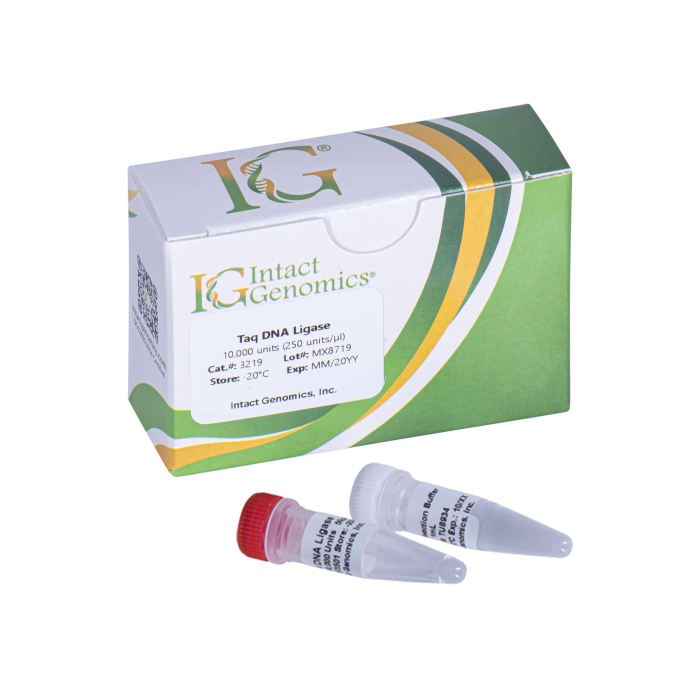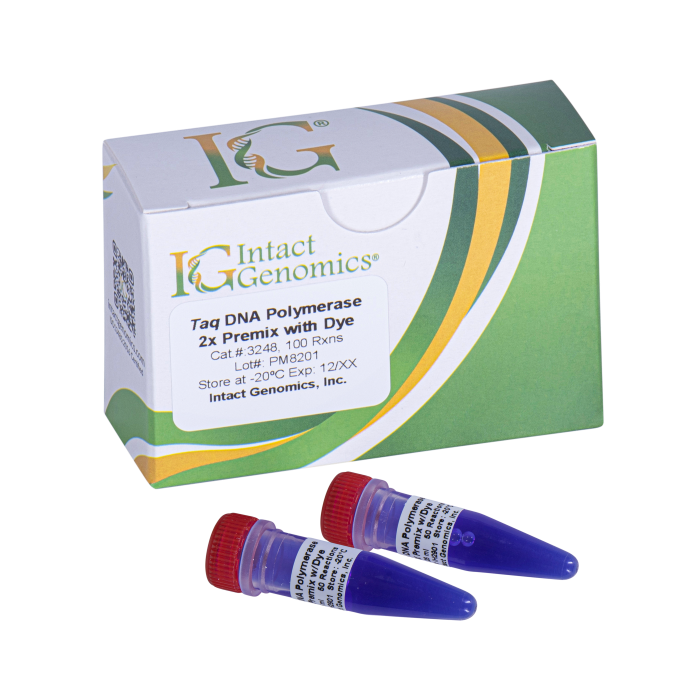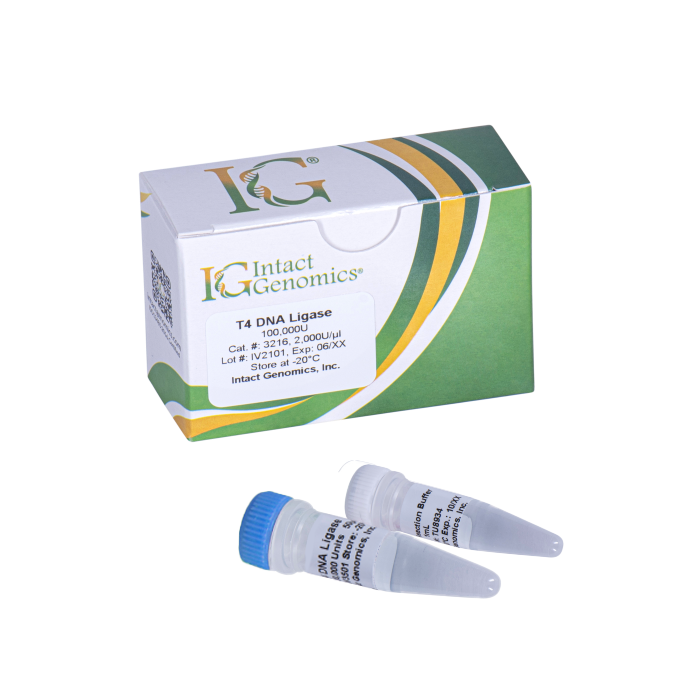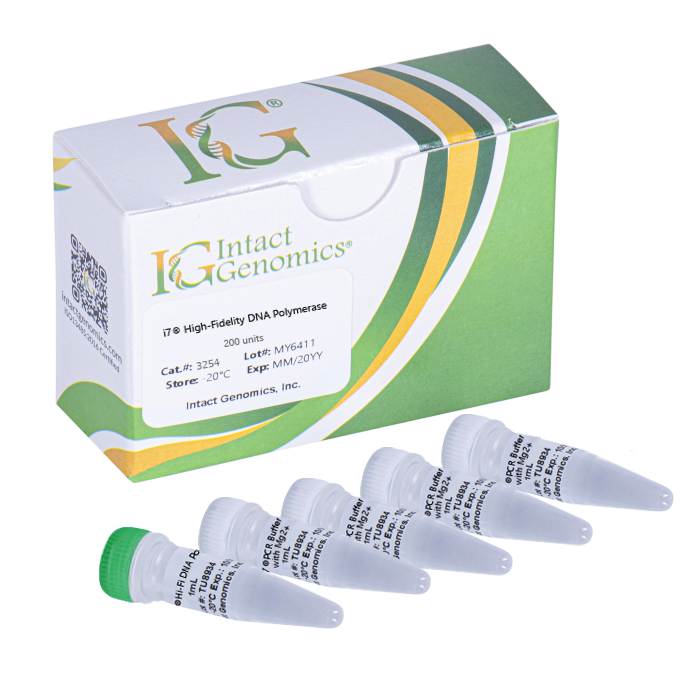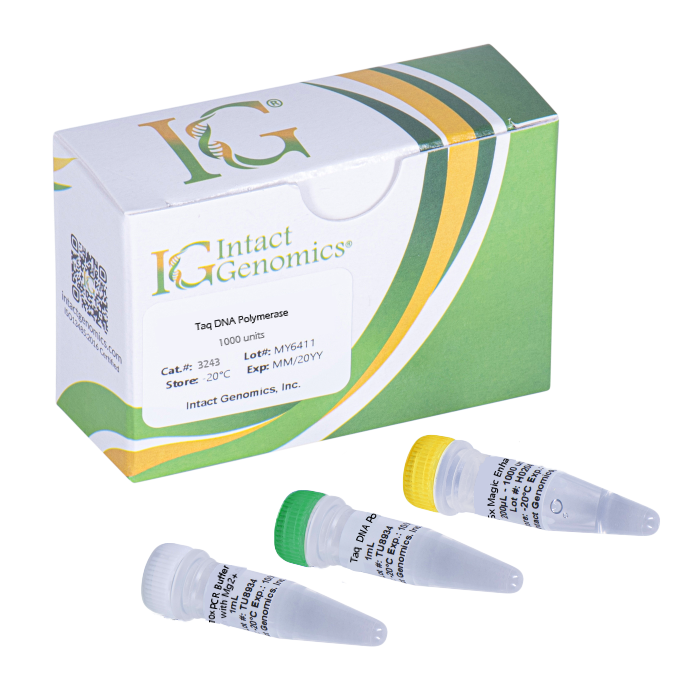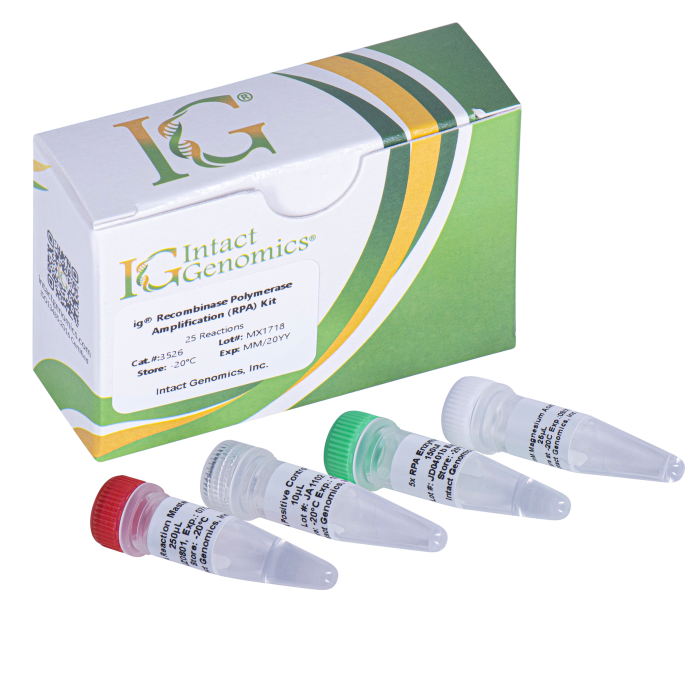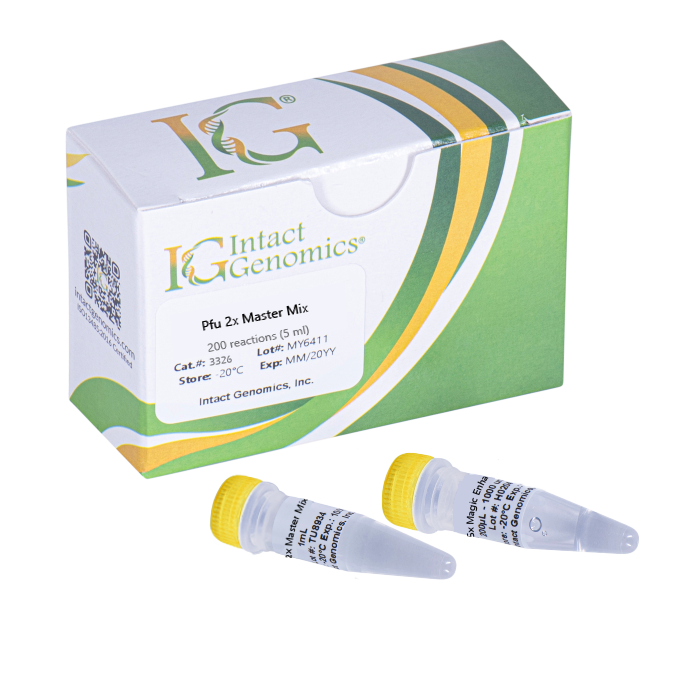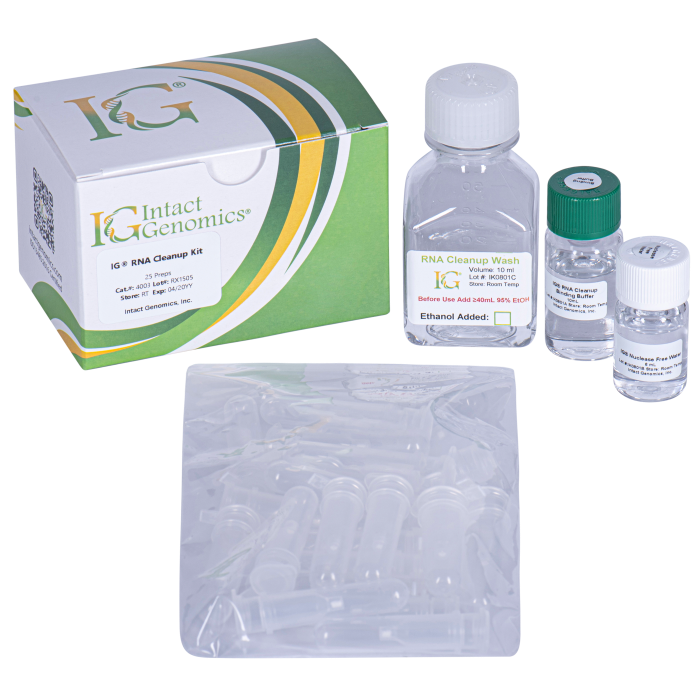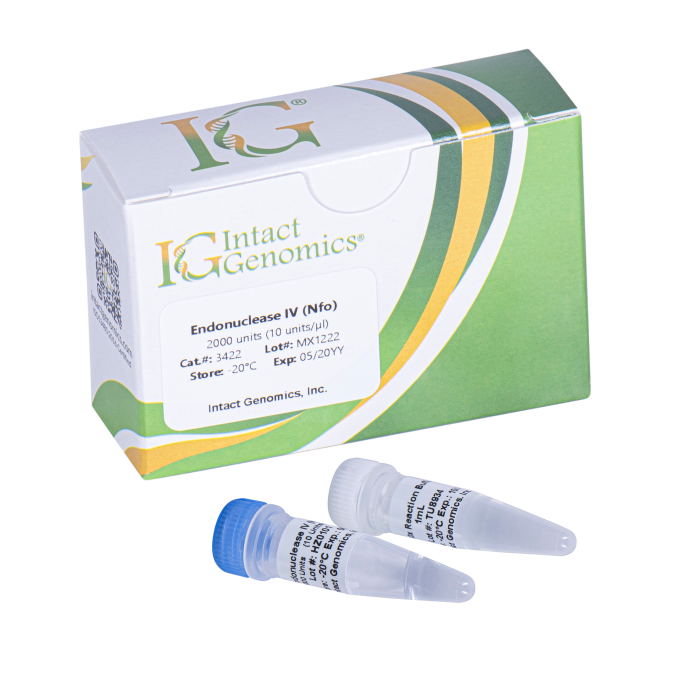Intact Genomics Taq DNA Ligase delivers exceptional specificity and performance for ligation-based PCR, SNP detection, and molecular diagnostics. Achieve precise, high-temperature DNA ligation. Perfect for applications demanding accuracy and reliability.
Taq DNA Ligase
Price range: $85.00 through $250.00
Description
Taq DNA Ligase catalyzes the formation of a phosphodiester bond in duplex DNA containing adjacent 5′-phosphoryl and 3′-hydroxyl termini, using NAD+ as a cofactor. The ligation will occur only if the oligonucleotides are perfectly paired to the complementary target DNA and have no gaps between them; therefore, a single-base substitution can be detected. This product is active at elevated temperatures (45°C-70°C) (1, 2).
The physical purity of this enzyme is ≥99% as assessed by SDS-PAGE with Coomassie® blue staining (see figure below).

Product Source
E. coli strain expressing the cloned Taq DNA ligase gene from Thermus aquaticus HB8
Applications
- Allele-specific gene detection by using Ligase Detection Reaction (LDR) and Ligase Chain Reaction (LCR) (1).
- Mutagenesis by incorporation of a phosphorylated oligonucleotide during primer extension amplification(3).
Product Includes
1) Taq DNA Ligase
2) 10X Taq DNA Ligase Buffer with NAD+
Storage Temperature
–20 °C
Storage Buffer
50 mM Tris-HCl, 50 mM KCl, 1 mM DTT, 0.1 mM EDTA,
50% Glycerol, pH 7.5 @ 25 ºC
10X Taq DNA reaction buffer with NAD+
500 mM Tris-HCl, 100 mM MgCl2, 100 mM DTT, 10 mM NAD+, pH 7.5 @ 25ºC
Unit Definition
One unit is defined as the amount of Taq DNA required to join 50% of 1 μg of the 12-base cohesive ends of Lambda DNA cut with Sma I and Sal I in 50 μl reaction in 15 min incubation at 45 °C.
Quality Control
This product is free from detectable RNase or contaminating DNA endonuclease activities. 3218 3219
Additional information
| Units | 2,000 units (50 µl), 10,000 units (250 µl) |
|---|
- Set-up the reaction as follows:

2. Incubate at 50 °C for 15-30 minutes.
References
- Barany, F. (1991). Proc. Natl. Acad. Sci. USA. 88, 189-193.
- Takahashi, M. et al. (1984). J. Biol. Chem. 259, 10041-10047.
- Michael, S.F. (1994). Biotechniques. 16, 411-412.

